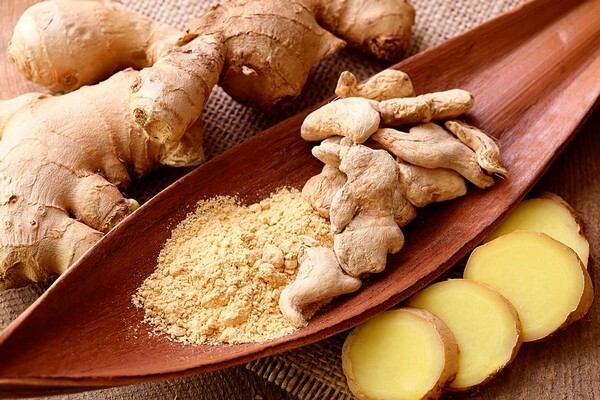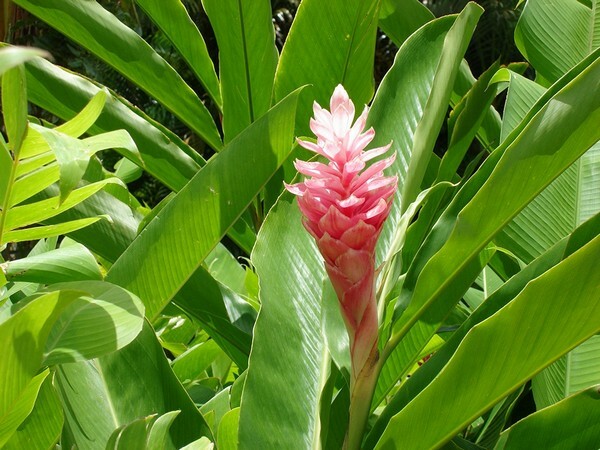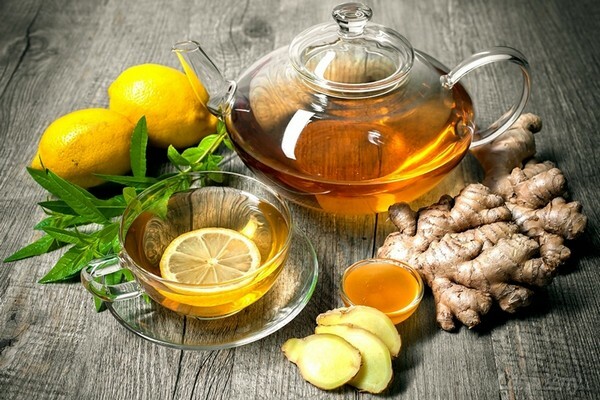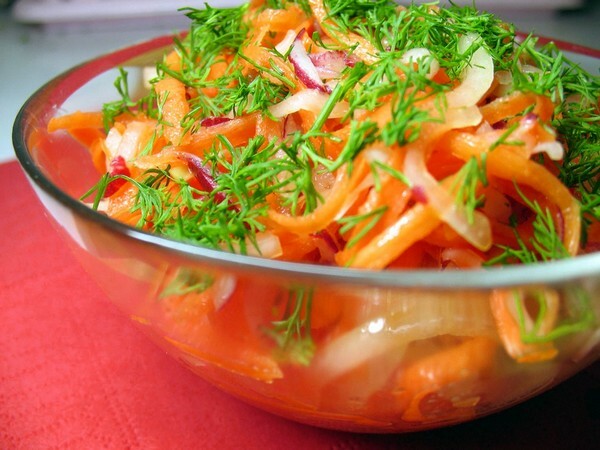- Special features of using
- Chemical composition of medicinal roots
- Useful properties of aromatic spice
- Contraindications
Ginger is a spice that has become popular due to its unusual aroma and specific taste. The medicinal herbs of the mistress are added to salads and vegetable side dishes, mixed into a dough for pies and gingerbread, and based on them, fragrant tinctures. No less widely known and medicinal properties of ginger: anti-inflammatory, antimicrobial, antipyretic. Tea made from fresh and dried roots helps an adult and a child to get rid of dyspeptic disorders, colds, beriberi. But before using ginger to treat a particular disease, you should consult a doctor because of the wide list of contraindications to a spicy plant.

powder obtained from them, have healing properties. Typical features of using
Not every ginger root is suitable for the treatment of pathologies. In our country, this spice in a fresh form appeared relatively recently. Usually, for flavoring dishes, powder or chopped pieces in a set of spices was used. The greatest therapeutic effectiveness has a fresh root. So mistakenly called the rhizome of ginger, which is, in fact, an underground stalk.
It's interesting: For the first time a useful plant was brought to the territory of modern Europe from the eastern countries. The sailors took him on long hikes to fight nausea and numerous infectious diseases. Gradually, the spice spread to the land. Adding aromatic roots in food, people simultaneously improved the taste of dishes and cured cold or stomach pathologies.
The roots of ginger, which are sold in our country, are mostly supplied by Chinese manufacturers. It is no secret that in this country chemical fertilizers are used in huge doses to increase the yield of any vegetable culture. Therefore, after buying a medicinal plant, the roots should be soaked in order to make all harmful compounds into the water:
- wash the rhizome with a brush;
- gently remove the cuticle with a sharp knife;
- soak in cold water for 2-3 hours.
Buying ginger in a supermarket, you should give preference to dense and elastic rhizomes that emit a strong fresh smell. Darkened, wrinkled medicinal raw materials are not used in therapy because of the loss of most of the nutritional and biologically active substances.
The chemical composition of medicinal roots
The therapeutic properties of ginger and contraindications to use are determined by the organic compounds entering into the composition of the roots. As this grows, the plant accumulates a huge amount of nutrients in high concentrations. This combination will benefit one person, and the other will provoke a serious malaise. Ginger contains the following biologically active compounds:
- microelements: molybdenum, selenium, iron, chromium, potassium, zinc, magnesium, phosphorus;
- vitamins: ascorbic acid, thiamine, cyanocobalamin, retinol, pyridoxine, riboflavin;
- amino acids: lysine, phenylalanine, threonine, methionine;
- combination of essential oils;
- organic acids: linoleic, nicotinic, caprylic, oleic;
- alkaloid capsaicin, which determines analgesic and anti-inflammatory activity;
- natural coloring agent curcumin;
- is a rough fiber, cleansing the gastrointestinal tract from toxins and toxins.
But the most valuable compound in the ginger root is gingerol. It gives the medicinal raw material a burning taste and determines its curative effect on the human body.

Useful properties of aromatic spice
Not only in official and folk medicine, antioxidant properties of ginger are used, but also in cosmetology. Biologically active substances prevent the destructive effect of free radicals on the tissues of the human body. Extract from the roots manufacturers add to lotions, tonics, creams, shampoos. The use of such hygiene means is most important in the presence of seborrheic dermatitis, acne, small, long-healing lesions. Preparations with ginger help to speed up the regeneration of the skin, stop inflammation, quickly eliminate irritation and itching.
Improving Digestion
To normalize the digestion of food and the absorption of fats, proteins, carbohydrates, you can use ginger tea or simply season the dishes with a finely ground root. A useful plant has long been famous for its ability to reduce the severity of dyspeptic disorders:
- nausea;
- of vomiting;
- rumbling and bubbling in the abdomen;
- epigastric pain.
Essential amino acids from ginger reduce the optimal lipid metabolism. Therefore, the regular use of aromatic spices serves as a preventive measure against the accumulation of cholesterol in blood vessels. Biologically active compounds of the roots improve microcirculation in the gastrointestinal tract, thereby accelerating the metabolic processes.
Recommendation: Grated ginger root should be added when cooking into fatty foods. This will help properly digest food and avoid excessive gas formation.
In the treatment of digestive disorders, bactericidal and antiseptic properties of the plant are actively used. The use of tea or infusion helps to eliminate the processes of putrefaction and fermentation, arising from the excessively slow movement of products through the gastrointestinal tract.
The use of medicinal drinks contributes to a gradual decrease in body weight due to the acceleration of metabolism, especially fats. The medicinal properties of ginger and for the normalization of peristalsis are irreplaceable. Proper digestion of food allows you to get rid of chronic constipation or diarrhea, including those provoked by viral or bacterial intestinal infections. How to prepare a healthy drink:
- Add 2 tablespoons of crushed roots to a thermos bottle and pour a liter of hot water( 85-90 ° C).
- Insist for about an hour and filter.
- Drink 0,5 glasses after meals 3-4 times a day.
Tip: Those who want to lose weight should take into account that the infusion of ginger root increases appetite, and weight loss occurs only due to the acceleration of metabolism. Therefore, during a diet should not eat more often than usual.

Respiratory disease therapy
Fragrant tea from the root of ginger is a known preventive against angina, bronchitis, sinusitis, tracheitis, and influenza. Drinking the drink speeds up the recovery due to the anti-inflammatory activity of the plant. And the essential oils that make up the roots have a diverse effect on the human body:
- increases resistance to viral and bacterial infectious agents;
- destroys pathogenic microorganisms;
- sanitize inflammatory foci;
- facilitate breathing;
- removes from the upper and lower respiratory tract viruses, microbes, toxic products of their vital activity.
Organic acids and essential oils can dilute the thick sputum accumulated on the mucous membrane of the throat and nasopharynx. Therapists recommend drinking infusion with ginger as an additional means for therapy of nasal congestion, wet and dry cough. You can prepare medicinal tea according to the following recipe:
- Pour 0.5 teaspoon of grated fresh root into the ceramic kettle.
- Pour a glass of hot water( not boiling water!), Cover with a lid and leave for 20 minutes.
- Strain, add a teaspoonful of thick honey and a slice of lemon.
In the absence of contraindications, you should drink this tea 1-2 times a day during meals during the off-season, when epidemics of respiratory diseases occur.
Treatment of abnormalities of the musculoskeletal system
Healing properties of ginger are used in the therapy of muscle and joint pains, provoked by a chronic inflammatory process. Traditional medicine practices the use of roots for the treatment of such pathologies:
- intervertebral hernia of various localization;
- cervical, thoracic, lumbar osteochondrosis;
- arthritis, myalgia, polyarthritis, gout;
- radiculitis;
- intervertebral neuralgia.
Useful properties of ginger in the treatment of diseases of the musculoskeletal system are based on the constituent microelements, vitamins and essential oils. The use of compresses allows to stop the spread of inflammation to healthy areas, to reduce the severity of the pain syndrome. Under the influence of capsaicin, blood circulation in the affected tissues improves. Nutritional and biologically active substances, as well as molecular oxygen, begin to enter cells and nerve endings. This helps to accelerate regeneration and replenish the stock of necessary micro- and macroelements. Cure articular and bone pathologies can be as follows:
- In a ceramic kettle put a tablespoon of fresh crushed roots.
- Pour a glass of hot water and leave for 2 hours.
- Strain, moisten with a sterile napkin and apply to a damaged area.
- Keep until dry.
If necessary, the procedure can be repeated after three hours. The duration of the course treatment is 10-14 days. The use of ginger compresses does not negate the mandatory intake of non-steroidal anti-inflammatory drugs or antispasmodics.
Recommendation: It is best to use a combination of ginger compresses and teas in the therapy of chondroses and intervertebral hernias. This will not only accelerate recovery, but will also be an excellent prevention of painful recurrences of chronic pathologies.

Smoking
No, a useful plant can not save a person from harmful dependence. In official and traditional medicine, ginger is used as a part of fees for removing toxic compounds of tobacco smoke from the body. Smokers often suffer from digestive disorders and peristalsis, provoked by irritation of the mucous membranes. The ability of ginger to normalize the work of the gastrointestinal tract helps a person get rid of uncomfortable sensations after eating. Also the smoker's organism constantly suffers deficiency:
- vitamins, especially ascorbic acid;
- mineral compounds.
All these biologically active substances come along with the infusion of ginger root. More recently, the anti-cancer effect of the plant has been scientifically proven. This is especially true for smokers because of the often diagnosed malignant neoplasms in their lungs. Ginger prevents the degeneration of cells and the formation of cancer tumors. How it is possible to prepare a medicinal collection:
- In a thermos to put a table spoon of the fresh grated root and on 2 items.spoons of dried herbs of oregano and sage.
- Pour 3 cups of boiling water and leave for 2 hours.
- Filter, take 3 tbsp.spoons before meals 3-4 times a day.
This infusion also improves the condition of the blood vessels, which quickly lose elasticity and normal permeability in smokers.

Contraindications
Not all people can use ginger for therapeutic purposes. A high concentration of biologically active substances in the roots can provoke the development of an allergic reaction in a person with intolerance to capsaicin or essential oils. Medicinal forms of ginger for internal use can not be used in the presence of the following pathologies:
- acute and chronic diseases of the stomach, liver, pancreas;
- cardiovascular system;
- respiratory infections occurring against a background of fever;
- tendency to bleeding.
You can not use tea and infusion of ginger in late pregnancy, as they are able to increase the tone of the uterus. The plant intensifies the action of many pharmacological drugs - glucocorticosteroids, antiarrhythmics, alpha-blockers. Therefore, the advisability of treating ginger should be consulted with a doctor.
